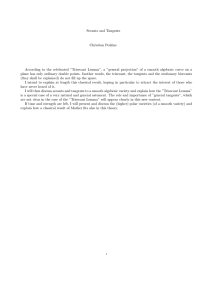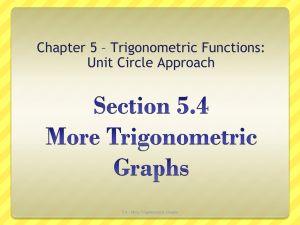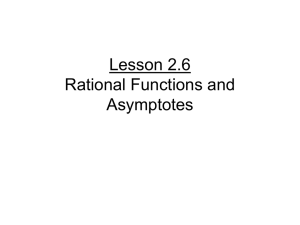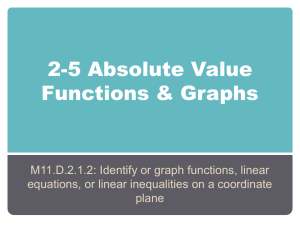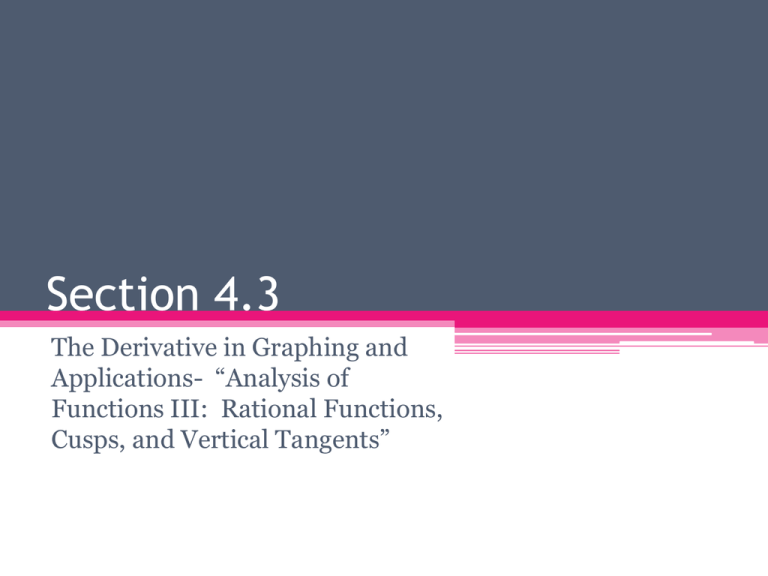
Section 4.3
The Derivative in Graphing and
Applications- “Analysis of
Functions III: Rational Functions,
Cusps, and Vertical Tangents”
All graphics are attributed to:
• Calculus,10/E by Howard Anton, Irl Bivens, and
Stephen Davis
Copyright © 2009 by John Wiley & Sons, Inc.
All rights reserved.
Introduction
• In this section we will discuss procedures for graphing
rational functions and other kinds of curves.
• In many problems, the “properties of interest” in the
graph of a function are:
symmetries
x-intercepts
relative extrema
intervals of
increasing and
decreasing
asymptotes
periodicity
y-intercepts
concavity
inflection points
end behavior
• Some of these properties may not be relevant in certain
cases; for example, polynomials do not have asymptotes.
Graphing Rational Functions
• Recall that a rational function is a function in the
form f(x) = P(x)/Q(x) which is the ratio of
polynomials P(x) and Q(x).
• Before graphing, check to make sure whether or
not P(x) and Q(x) have any common factors. If
they do, there will be holes in the graph.
• After that, you will be looking at many of the
properties listed on the previous slide.
• You will find more specific instructions on the
next slide.
Example – Steps 1-3
Example continued – Steps 4-7
Example with Oblique or Curvilinear
Asymptotes
• There are examples on the bottom half of page
258 where the rational functions have a higher
degree polynomial in the numerator than in the
denominator.
• These result in other kinds of asymptotes, such
as slant (oblique) asymptotes or curvilinear
asymptotes.
• We will not do these this year.
Graphs with Vertical Tangents and Cusps
• We commonly find points in our graphs where
there is a vertical tangent line, therefore, the
function is not differentiable at those values of x.
• There are four examples of this occurring on the
next slide.
• In the first two graphs, a&b, there is an
inflection point with the vertical tangent line.
• In the second two graphs, c&d, there is a cusp
(where the limit approaching from the left does
not equal the limit approaching from the right).
Example with Vertical Tangents
• Follow the same steps as the previous example,
but don’t forget to look for vertical tangents.
• Steps 1-3, 5
Example with Vertical Tangents con’t
• Step 6 (this is where the extra work comes in)
Example with Vertical Tangents con’t
• Steps 4 & 7
Golfing with My Mom
in Phoenix




